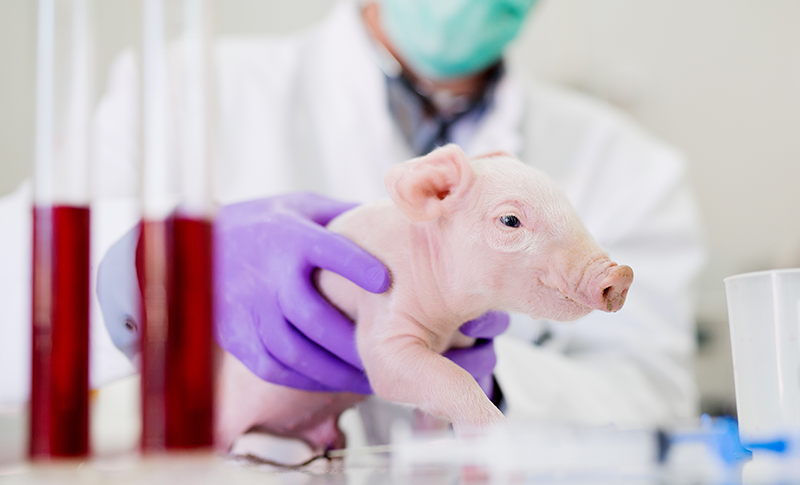Anyone with spare ribs on the menu this Christmas will be familiar with the way the ribs between the meat make eating spare ribs awkward and unappetising. The gnawing, the greasy hands, the meat you can’t get off the ribs properly.
Researchers at WUR are working on solving this problem. Several departments and companies are joining forces to create a ribless pig in a major EU project called Spare the Rib (Supporting Porcines with ARtificial intElligence THrough Evidence-based RIgid Biomimicry).
The EU has praised the project for its simplicity and the team for its bold vision. ‘It might seem straightforward, but the spare rib is a complex part of the pig,’ says project leader Henk Boner. ‘The ribs provide strength and are formed early in the pig’s development. To stop the construction of the ribs, we had to collaborate with geneticists.’
A collaboration that proved fruitful. Animal breeder Dries Hoof: ‘We eventually managed to create a mutant piglet in which the main genes for ribs were deleted from the DNA.’ But they had to find another way of providing the firmness that the ribs give, so the pig could breathe properly. That is where the robotics experts of Delft University came in. Attaching steel frames to the pig’s chest wall controlled from a small computer on its back enabled the animal to breathe freely. ‘It is a clever piece of machine learning,’ says Boner. ‘An added advantage is that the frame can then be hung from the meat hooks in the abattoir.’
There are criticisms of the project, however. ‘We have concerns about the welfare of this robo-pig,’ says Magda Fluff of the Cuddly Animal Foundation. No need for that, says Boner: ‘The frames are attached to rails at the top of the stall, and that prevents the pigs from collapsing.’ In consultation with Cuddly Animal, the researchers created a digital twin and hung cameras in the barn, which provided big data. Boner: ‘Both the digital twin and the camera data show that the pigs have no symptoms such as joint pain, collapsing and so on. So the level of discomfort is very low.’
All in all, this marks a new era for the livestock sector. Thanks to new technologies, the animals can be adapted to consumers’ needs better than ever before, without compromising welfare and sustainability. ‘The beauty of this pig is that the quality of the meat is still the same,’ says Boner. ‘You get the same mouthful, but without the inconvenience of those bones.’


![[Seriously?] FYI: new uni EN test](https://www.resource-online.nl/app/uploads/2025/03/WEB_DeNeus.png)
![[Seriously?] The Gulf of WUR](https://www.resource-online.nl/app/uploads/2025/02/WEB_DeNeus.png)
![[Seriously?] AI denies spreading fake information](https://www.resource-online.nl/app/uploads/2025/01/36-WEB_DeNeus.jpg)